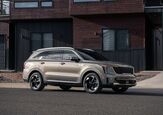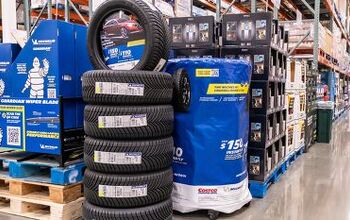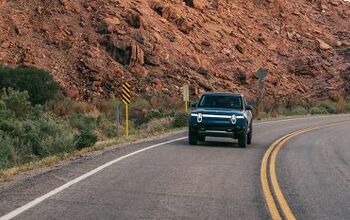15 Views
A Walk Down The Memory Lanes Of The Japanese Car. Tour Guided By Lexus LFA Engineer, With 92 Never Before Released Pictures

by
Bertel Schmitt
(IC: employee)
Published: May 1st, 2013
Share
Last weekend, we were in Kuniyoshi, Chiba, the peninsula across Tokyo Bay, to check on some old cars. This is what and who we met.
TTAC’s cross-cultural adviser, Frau Schmitto-san walked by what looked just like the 360 Subaru we test-drove a year ago in Japan.
Minutes later, we saw a skinny, bespectacled man who looked very much like Chiharu Tamura, owner of said 360 Subaru, and Deputy Chief Engineer of the Lexus LFA supercar. The test drive had been a ruse to distract from my secret mission: To observe the making of the LFA.
It was him, it was his car. Tamura-san had driven Subie-san all the 250 miles from Toyotashi to Kuniyoshi to attend an event that celebrated old cars, old trains, old buses, and an old town.
The event was to help revitalize Kuniyoshi, a town that needs a revival badly. The town doesn’t even exist anymore, at least not officially. In 1955, it was merged with a few neighboring towns into Isumi. In 2005, it was merged again.
The only thing that reminds of Kuniyoshi is Kuniyoshi Station, a stop on a narrow gauge line that had been threatened with closure, many times.
This is the old train that brought us to the station.
It didn’t look much different than the old train that is now a museum piece, parked on a short piece of rail that leads to nowhere.
In front of the station, we find a rarity: A 23-window 1967 Volkswagen Bus, the DeLuxe version with sunroof and eight skylight windows. The bus is in great shape, its interior and upholstery have been restored. Later, in the evening, we’ll take it to a nice dinner by the beach and watch a big fat red moon rise over the Pacific Ocean.
The bus belongs to the station, and is driven by the station master, Daisuke Kurihara. He is a multi talent. Living with his mother in a farm, he is a trained opera singer.
At age 25, Kurihara retired from the opera, studied drawing and started producing highly detailed miniatures of old cars, old trains, old buses, and old motorcycles.
This is his rendition of a Volkswagen Beetle.
This is the original, which we find by the road around a corner. It is a 1967 Beetle 1500. The Beetle was exported to Japan in great numbers and was the foundation on which Volkswagen built its empire as the largest importer to Japan.
Naturally, Japanese cars dominated the Kuniyoshi event. This is the convertible version of the Toyota Publica, introduced in 1963. The Publica was intended as Japan’s Volkswagen: It traces back to MITI’s “national car” concept of 1955.
Before anyone makes tired jokes about Toyota and unintended acceleration, let me preempt and assure you that any intended or unintended acceleration during the event was made impossible by way of this simple device that was issued to and mandatory for all participating vehicles.
This is the 1967 Mazda Familia, aka Mazda R100, with the rotary engine, that made it a Mazda Familia Presto Rotary.
The rotary engine quickly received a reputation of being finicky and thirsty. No wonder the owner is asking for donations.
This modern-looking kei car is from the early ‘70s: A Honda Z GS. Its 354cc engine spun at a dizzying 9,000 rpm for a 36 hp output.
This is a 230 Nissan Cedric in the Deluxe trim. Built between 1971 and 1975, the Cedric was sold abroad as the Datsun 200C through 260C
I lifted the pertinent information from the all-knowing Wikipedia. Actually, the car we saw in Kunioshi is not simply the same, but identical to the car pictured in Wikipedia. Wikipedia’s PC police blanked out the bottom part of the license plate, but left the upper third, and that’s all we need for a very close match.
I could go on and on about the historically significant vehicles parked by the roadside in usually sleepy Kuniyoshi, but I am afraid this could bring the TTAC server to its knees. So here are the Japanese bookends of the event:
The three-wheeled Daihatsu Midget, introduced in 1957 with a 250 cc engine that produced a breathtaking 12 hp, quickly became the mainstay of transportation throughout Asia. There were a few of them on display in Kuniyoshi, and some of them may still be in use.
Although production officially ceased in 1972, copies of the Midget are still made in Thailand and other parts of Southeast Asia where they do duty as “tuk-tuks,” or motorized rickshaws. The orange one in the back is a Mazda three-wheeler, formerly used by a moving company. Its size is more than adequate to move the average Japanese apartment.
On the other side of the Nipponese spectrum is the Mitsubishi Debonair. Introduced in 1964 and built nearly unchanged through 1986, this was a big car – by Japanese standards.
Designed by former GM designer Hans S. Bretzner, the car looks a little bit like an old Lincoln Continental that was washed too hot and shrunk .
This 1975 Executive model sports the 2 liter ‘Saturn 6” engine, which makes it a rarity.
As far as foreign cars go, it is interesting to observe what constitutes a classic car in the eyes of the Japanese collectors, what is seen as representative of an era and a car culture. The doitsu, or Germans, are well represented by their iconoclastic Volkswagens, mentioned and shown further above. The French are exemplified by a lone Citroen CX 25 GTI, parked in front of a house that is in need of revitalization.
Turkey is here, not with a car, but with Turkey’s national food, the doner kebab.
America is epitomized in Kuniyoshi by a rolling symbol of excess, a very much stretched Cadillac. According to some in Detroit, the Japanese car market is closed, but some cars appear to manage to squeeze through.
Intentionally, or by happenstance, the stretch was placed in front of a symbol of Japanese frugality and bonsai culture, the Mazda Carol, a kei car that was powered by one of the smallest 4-cylinder automobile engines in history, and that grabbed an amazing 67 percent of the kei car market in its first year in 1962.
This is the American car that made the strongest impression on Japan.
An impression so strong that the Willy’s Jeep is the only car shown in duplicate at the Kuniyoshi event.
It comes complement with a faux Cavalry Major.
There are the original Signal Corps radios, in duplicate.
Shockingly for a society where public display of weapons is rare, and where even antique swords need a license, there is a regulation M1, thankfully under lock and key.
Even more shocking: “He’s one of the very few American Army Majors who can eat rice with chopsticks,” says Frau Schmitto-san.
Around the corner, and mostly ignored, a Made-in-Japan Jeep, built under license by Mitsubishi. The Made-in-America Jeep is the most successful American import to Japan.
Meanwhile, back at the Subaru 360, Tamura-san explains a little mishap that occurred on the long way from Toyota-shi to Kuniyoshi.
The 45 year old exhaust manifold finally gave up the ghost and separated from the engine.
Something like that does not faze a leading Toyota engineer: With a field-expedient wire, a nearly invisible and mostly inaudible fix was effected.
We thanked Tamura-san, and we thank him again for this fascinating trip down memory lane and down the alleys of Kuniyoshi. Who could be a better guide through Japan’s living automotive history than one of Toyota’s leading engineers?
Ooopps, one of the leading engineers of Lexus, of course. The ID holder is made from carbon fiber, a memento of the carbon fiber LFA, a car that also is history. All members of the sadly disbanded LFA team received such a holder, and made from CFRP, car and ID holder will most likely live longer than any car we have seen in Kuniyoshi.

Bertel Schmitt
Bertel Schmitt comes back to journalism after taking a 35 year break in advertising and marketing. He ran and owned advertising agencies in Duesseldorf, Germany, and New York City. Volkswagen A.G. was Bertel's most important corporate account. Schmitt's advertising and marketing career touched many corners of the industry with a special focus on automotive products and services. Since 2004, he lives in Japan and China with his wife <a href="http://www.tomokoandbertel.com"> Tomoko </a>. Bertel Schmitt is a founding board member of the <a href="http://www.offshoresuperseries.com"> Offshore Super Series </a>, an American offshore powerboat racing organization. He is co-owner of the racing team Typhoon.
More by Bertel Schmitt
Published May 1st, 2013 8:56 AM
Latest Car Reviews
Read moreLatest Product Reviews
Read moreRecent Comments
- Tane94 Not New Jersey, that's for sure!!
- Syke Hopefully they do consider the American market, as I'll be looking at trading in my current Bolt sometime in '25 or '26, and we've had a long good experience with Kia products. Given what GM is currently promising, I'll be looking at Kia well before any upcoming GM product.
- Jkross22 Full self drive - lol, Tesla isn't immune from naming things that are the opposite of what they are and what they do.
- Elrond Why does TTAC, the Press, Commenters, and even General Motors use "GM" when referencing? They changed it to gm quite a while ago.
- Corey Lewis A too-big building that's dated. Easier to sell it off than mess with its continual administration.






























































































































Comments
Join the conversation
Thank you, Bertel. Articles like this are why I always come back to TTAC.
RE: the Honda Z GS...9000 RPM from an engine used to power my mom's old Singer sewing machine. Thirty-six horses never worked so hard. God bless Japan...we will miss them terribly when they're gone.